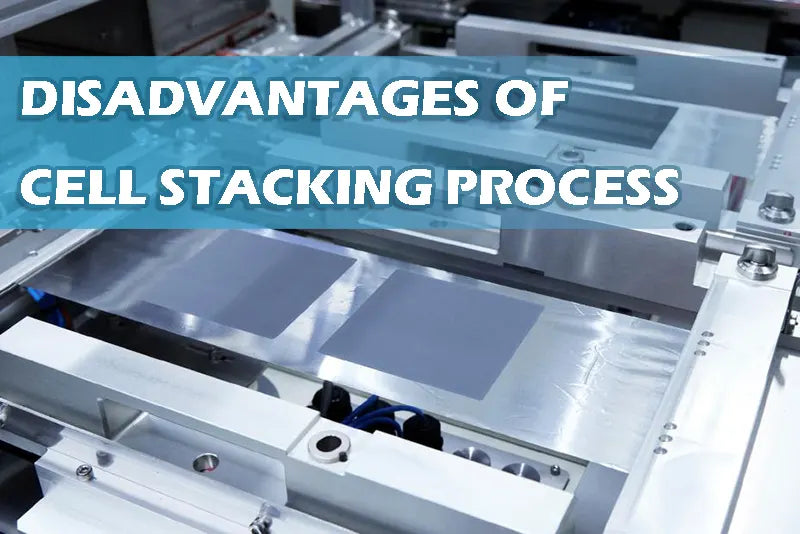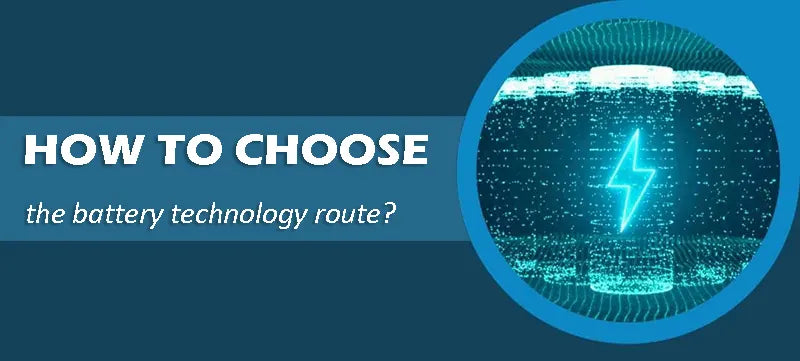
Main content:
In the discussion of the technical route of the power battery pack, should we choose a cylinder, a pouch or a square shell? Controversy continues. Similar technical route disputes also arise at the level of manufacturing feasibility of batteries. For the assembly process of lithium battery mid-section batteries, there are also two technologies competing with each other: cell stacking process and cell winding process.
The comparison between cell stacking and cell winding is: the space utilization rate of the battery cell, the life of the battery cell, the manufacturing efficiency of the battery cell, and the size of the manufacturing investment scale.
1. The difference between cell stacking process and winding process
Differences between cell stacking process and winding process:
● Cell winding process
By controlling the speed, tension, size, deviation and other factors of the pole piece, the matching pole piece, battery separator and tape are divided into strips and rolled into pole cores according to the size.
● Cell stacking process
A production process in which pole pieces and battery separators are stacked alternately to finally complete a multi-layer stacking pole core.

From the perspective of battery form, pouch and blade batteries are designed and produced around the cell stacking process, while square batteries can use either the cell stacking process or the winding process. At present, the main technical direction of Chinese battery companies is still mainly around winding. Cylindrical batteries, as a mature product form, have always adopted the winding process. But in the long run, with the advancement of cell stacking technology, a large number of lithium battery companies in the world have begun to enter the cell stacking era from the original winding process.
2. Advantages of cell stacking technology
From the perspective of the final battery product, the battery product made by the cell stacking process has higher energy density, more stable internal structure, higher safety and longer life than the finished product of the winding process.
Higher energy density
The cell using the winding process has a lower space utilization rate due to the curvature at the winding corner, while the cell stacking process can make full use of the battery space. Therefore, under the same volume cell design, the energy density is also increased accordingly.
The structure is more stable
During the use of the battery, due to the intercalation of lithium ions, both the cathode and anode will expand. For the wound battery core, because the internal stress of the inner and outer layers is inconsistent at the winding corner, the battery core will be deformed in a wave shape.

In turn, the interface of the battery will deteriorate, the current distribution will be uneven, and the internal structure of the battery will become more and more unstable, and this process will be accelerated. However, the battery of cell stacking process will expand during repeated use, but in general, the expansion force of each layer is similar, so the interface can be kept flat.
Higher security
The expansion and contraction of the pole piece, the stretching of the separator, etc. will cause the deformation of the battery cell, ensuring the minimum deformation of the battery cell, which is also the guarantee of battery safety. During the winding process, the pole pieces at both ends are bent, and the coating material will undergo large bending deformation.
At the same time, problems such as powder dropping and burrs are prone to occur at the bends, and the pole piece and diaphragm are subject to tension, which is prone to wrinkles and unevenness. The battery cell stacking is uniformly stressed and deformed less, and the safety of the battery cell is higher.
Longer cycle life
Cycle life is one of the key properties of batteries. The cell stacking battery has more tabs, the shorter the electron transmission distance, and the smaller the resistance, so the internal resistance of the stacked battery can be reduced, and the heat generated by the battery is small. However, winding is prone to problems such as deformation and expansion, which affect the attenuation performance of the battery.
3. Disadvantages of cell stacking process
The cell stacking process also has its own problems: low production efficiency, high investment in equipment, and low yield.
Low equipment efficiency
Generally, the efficiency of power battery winding is 12PPM, and the square winding machine can achieve this efficiency when the length of the pole piece is 6000mm; but the efficiency of traditional Z-shaped cell stacking is only 4PPM, which is three times less efficient. In addition, cell stacking equipment has a larger footprint than winders, further reducing efficiency.

High equipment investment
From the perspective of a single production line, the number of winding machines required is related to the length of each battery cell. Generally, a production line requires 10 winding machines, requiring an investment of about 30 million RMB. Using the cell stacking process, the number of stacking machines required for a production line is related to the number of cells, and the investment in stacking equipment for a production line is 60 million yuan, or even more.
Low yield rate
The winding battery is easy to cut and has a high pass rate. Each battery cell only needs to cut the cathode and anode once, which is less difficult. However, the slitting and cutting of the cell stacking sheets is cumbersome, and each battery has dozens of small pieces, which is prone to defective products, so the single battery of the stacked sheet is prone to problems such as cross section. Blade cells, this form is naturally more suitable for stacking. This is because the length of the blade cell is 960mm and the height is 90mm. The blade battery is produced by the cell stacking process, the alignment can be controlled within 0.3mm, and the stacking efficiency is 0.3s/pcs.
4. How to choose the battery technology route?
The development direction of cylindrical batteries, square batteries, and pouch batteries is still different for different companies according to their own conditions, each with its own advantages and disadvantages. Judging from the current technical situation:
- Cylindrical: Due to the standardization of 4680 battery, the use of winding technology, the manufacturing speed of a single battery is increasing, and the application scenarios are also expanding.
- Pouch: Transition to short blade and long blade, the use of cell stacking has greater advantages.
- Square shell: Keep the existing size, you can continue to use the winding process, but when it develops into a square shell cell stacking transition size, after becoming a short blade and a long blade, the cell stacking process will naturally be adopted.

From the perspective of manufacturing efficiency and yield:
- The largest potential is the wound large cylindrical battery, which is because of the dry electrode technology that has been introduced around the mature technology.
- Cell stacking is the fastest growing. Chinese battery companies are starting to design super-stacking + blade battery solutions. Many overseas companies are trying. There is a lot of room for imagination in this technology development.
- At present, the more stable development route is coiling. Square shell winding has become a mature process. In terms of original production capacity construction, the trend of this route is also the strongest.
5. Conclusion
Battery companies have to make trade-offs around the choice of process, but the trend is becoming clearer. With the development of technological innovation, the era of large-scale manufacturing of power battery TWh is an unavoidable point for every battery company. Whoever can do this well will be able to find their own foothold at the stage when power batteries become large-scale standardized products.
Related articles: 18650 battery store, 4680 battery vs 18650, Tesla 4680 battery vs CATL CTP battery